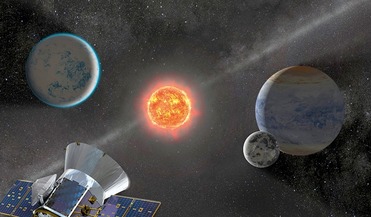 April 2019
Scanning the skies for exoplanets
April 2019
Scanning the skies for exoplanets
... mechanism we don’t yet understand,” said David Armstrong, a planetary scientist at the University of Warwick in the UK, who helped...which have already found some of the most remarkable planetary systems known today around nearby M dwarf stars, the...
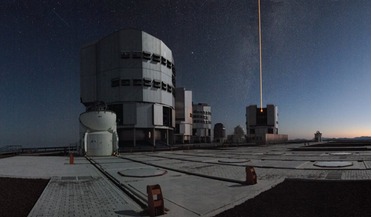 11 January 2017
ESO Signs Agreement with Breakthrough Initiatives to search for planets nearby
11 January 2017
ESO Signs Agreement with Breakthrough Initiatives to search for planets nearby
... visible light waves, and it allows scientists to peer through dust clouds to see the beginning stages of a blossoming planetary system. But even viewed in the mid-infrared, an evolving central star still remains millions of times brighter than...
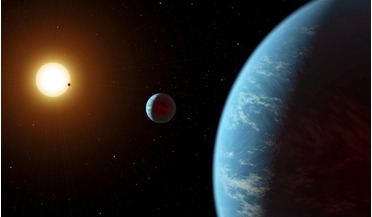 19 October 2020
Astronomers identify a true water-world that could have an ocean over 100 kms deep
19 October 2020
Astronomers identify a true water-world that could have an ocean over 100 kms deep
... more water than Earth and has an ocean hundreds of kilometres deep has been identified by a team of astronomers in a planetary system 40 lights years (10.5 parsecs) away. A few years ago, scientists using HARPS (the High Accuracy Radial velocity...
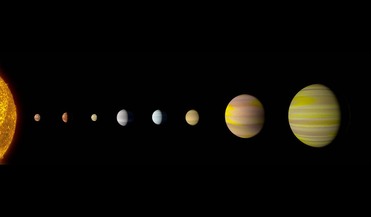 14 December 2017
AI detects eighth planet orbiting distant sun
14 December 2017
AI detects eighth planet orbiting distant sun
... early-stage research to apply machine learning algorithms – promises to continue to yield significant advances in our understanding of planetary systems around other stars. I’m sure there are more firsts in the data waiting for people to find them...
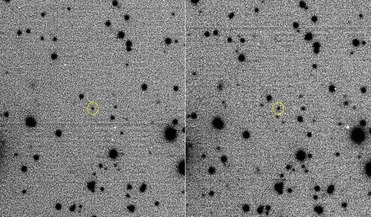 23 May 2018
First permanent extrasolar asteroid found near Jupiter
23 May 2018
First permanent extrasolar asteroid found near Jupiter
... direction, so it further implies that 2015 BZ509 did not originate here but must have formed in a neighbouring planetary system before being captured by Jupiter. Being captured in this way might seem a little dubious, but over 4.5 billion...
 13 January 2020
New study shows a split Solar System that kickstarted growth of Jupiter
13 January 2020
New study shows a split Solar System that kickstarted growth of Jupiter
When the Atacama Large Millimetre/Submillimetre Array (ALMA) started pointing its dishes at the disks where planetary systems are born – protoplanetary disks – the stunning, high-resolution images it returned showed a recurring sight; substructures ...